1. check the place where you can hang the work
Whether you own or rent your home, it is important to check the location where you can display your artwork.
1 - 1. check the rules
In most cases, artwork is hung on the wall, but if you own your home, you can often cut a hole wherever you like and not worry about anyone else. Please discuss this with your family members.
On the other hand, if you are renting, if you drill a hole in the wall, you may be concerned about the cost of repair when returning it to the landlord. According to the Ministry of Land, Infrastructure, Transport and Tourism's guidelines, the repair cost for small holes made by drawing tacks or pins is to be borne by the landlord. Therefore, when making a hole, choose a pin that can make a hole as small as a thumbtack. In many cases, if there is a noticeable hole such as a nail or screw, the tenant will be responsible for the cost of repair.
*Some cases may be handled differently depending on the individual case, so we recommend that you check the contract for details.
1 - 2. understand the construction of walls
Walls are often made of plasterboard, but the thickness of plasterboard is approximately 1~2 cm, which may not be able to withstand the weight of heavy works (e.g., canvas works weighing 5 kg or more or larger than size 30) if they are hung with pins or other tools.
Plasterboard is supported by a number of pillars, and artwork can be hung with pins in areas where there are pillars supporting the plasterboard, making it relatively stable.

If the wall is concrete, pins cannot be inserted, so instead of hanging on the wall, a picture rail may be attached to the ceiling and the artwork may be hung from the ceiling.
1 - 3. find a place with a pillar
It is often difficult to tell where a pillar is located just by looking at the surface of the wall. If you tap on the wall and the sound is light, you can assume that there are no pillars in the wall.
If you want to be more sure, we recommend using a ground-finding instrument from Shinwa Measurement Co.
-Amazon Amazon
-Amazon Rakuten

If the work is not heavy, it can be displayed stably even without a pillar behind it, depending on the pins you use.
1 - 4. environment
When displaying artwork, try to find a place where it will not be exposed to direct sunlight. The painting materials used in the artwork may discolor in direct sunlight.
We recommend that you display your artwork in a relatively well air-conditioned place that is not exposed to direct sunlight. 2.
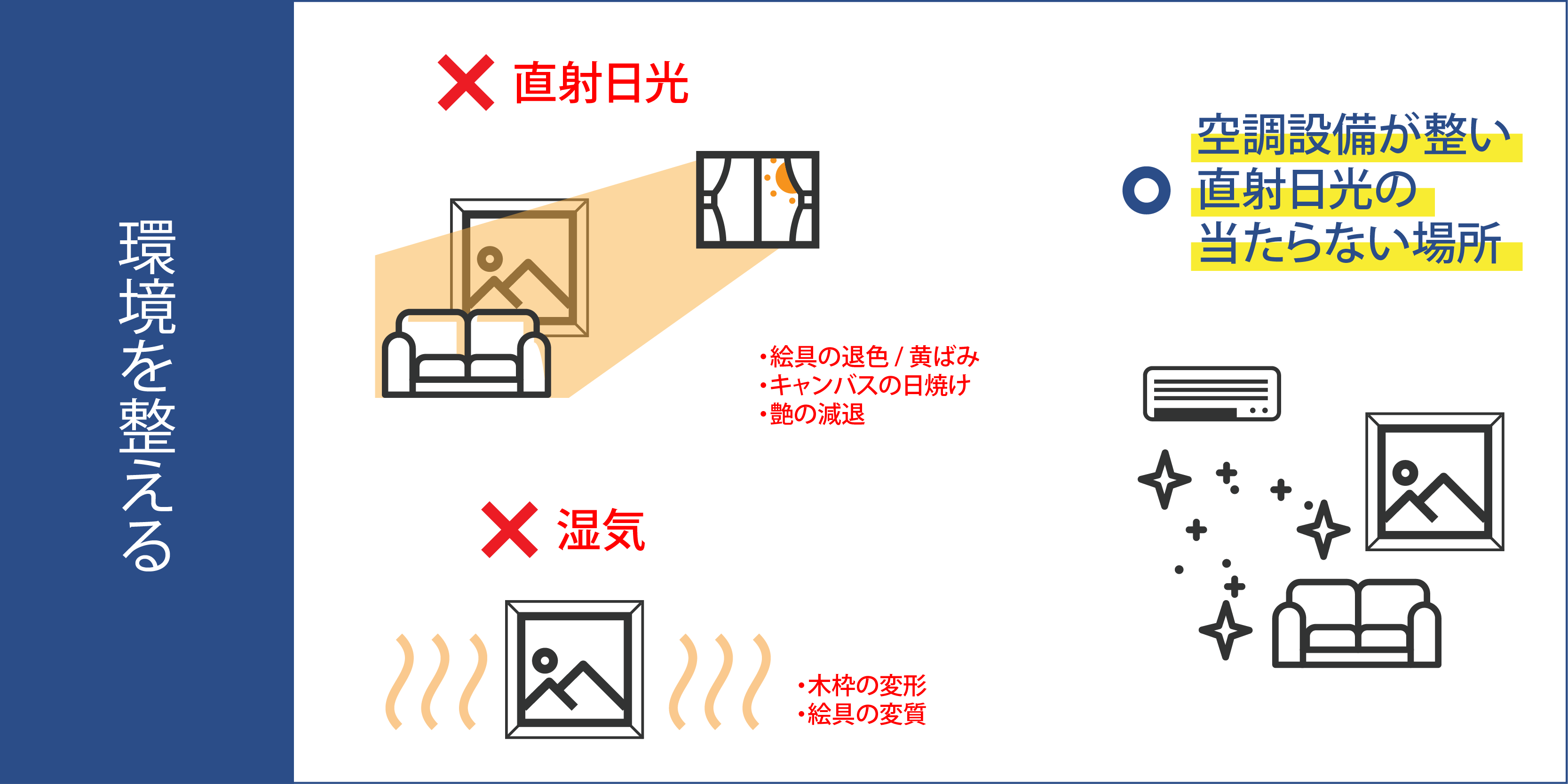
2. preparing display equipment
2 -1. hooks
The following is an example of using hooks for hanging on the wall.
We recommend three-pin hooks, which can be fastened to the wall with three pins and have a relatively heavy load capacity. The safe load capacity of the products introduced here is about 5 kg for one. Works on paper and canvases/panels of size 4,50 or smaller can usually be displayed with these hooks.
For renters, we also recommend a product called "Wall Beauty. This product uses a staple needle to hold the hook in place. Even with a staple needle, it is very easy to use because it has a load capacity of 6 kg and the damage to the wallpaper can be reduced to a level that cannot be seen unless you look closely.
If the picture is framed, add the amount of the frame to calculate the weight.
For hooks, please refer to the following purchase links.
-Amazon 3 pins Amazon
-Amazon 3 pins Rakuten
Amazon - 3pins 3 Pins Monotaro
-monotarou Wall beauty Amazon
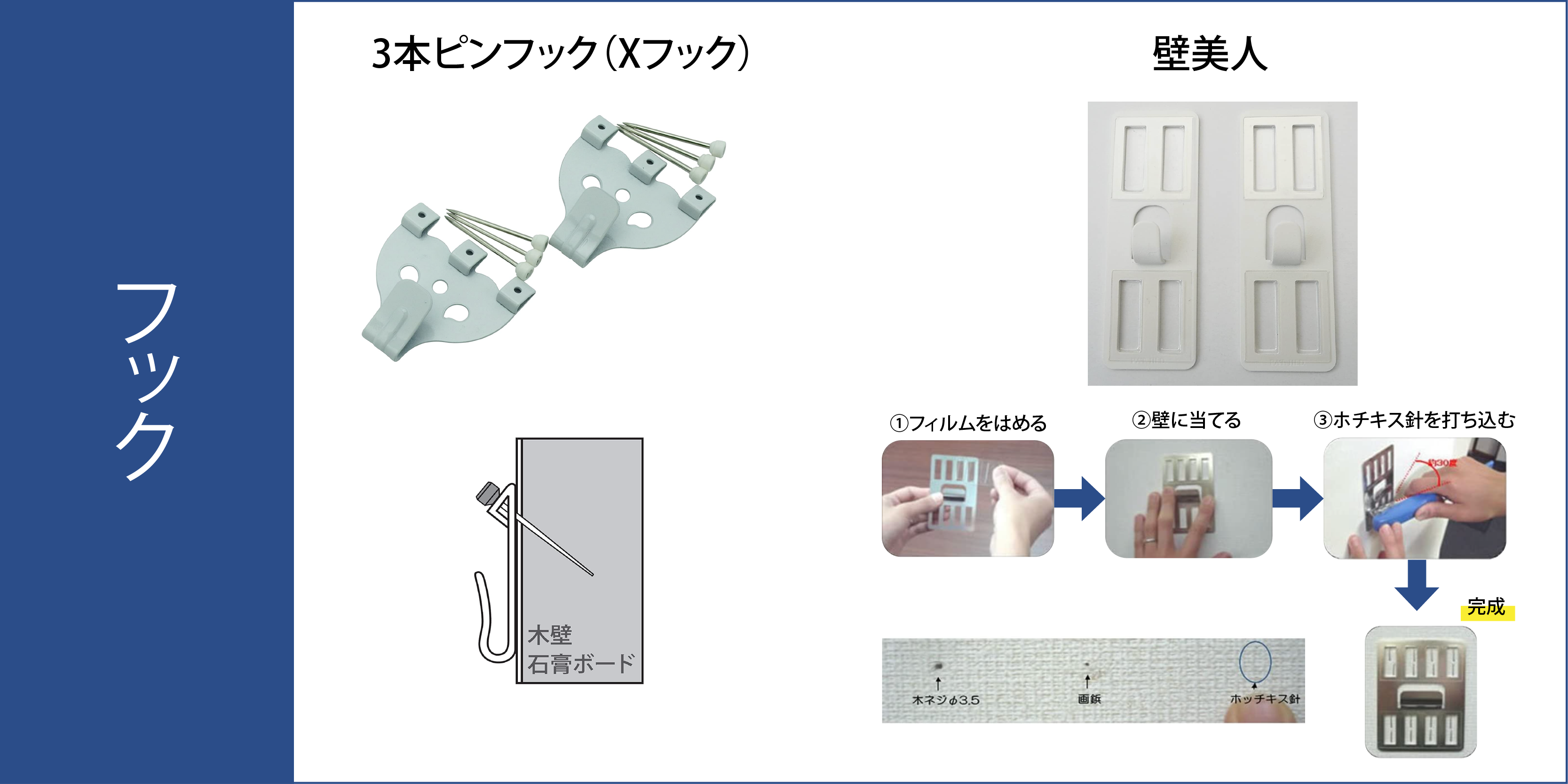
2 - 2. picture rail
Picture rails are rails attached to walls or ceilings that allow decorations to be displayed without drilling pin holes in the wall. It has a structure similar to a curtain rail.
A picture rail consists of several parts. It consists of five parts: the rail itself, hooks called runners that are placed inside the rail to hook wires, stoppers to block the ends of the rail, wires to hang on the hooks, and hooks for hanging artwork that are attached to the wires.
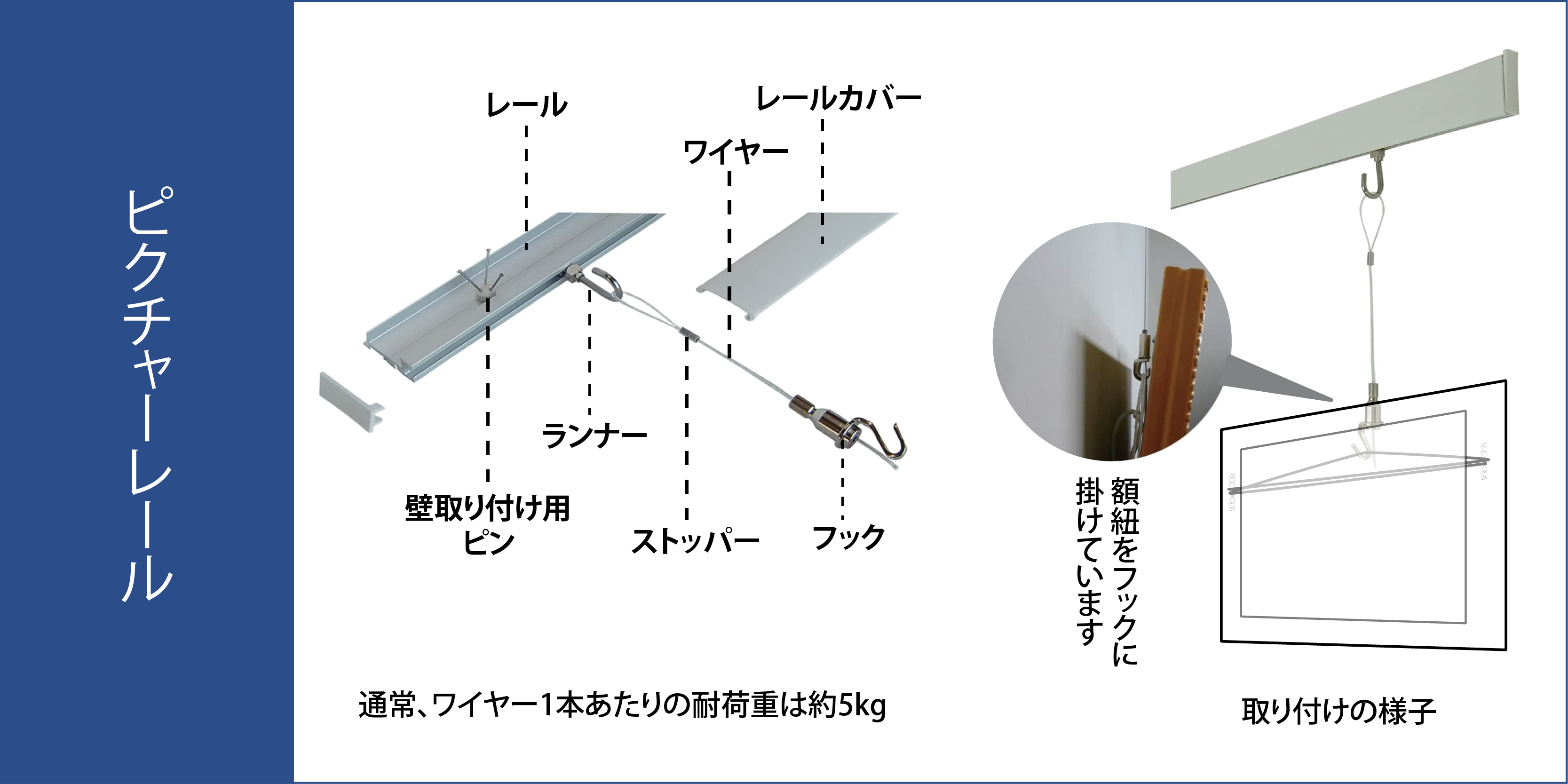
When installing a new picture rail, we recommend that you have a professional contractor check the base of the wall before installing it.
However, some products can be easily installed on plasterboard, so please refer to the following links for further information. They are also available at familiar furniture stores such as Nitori. Please pay attention to the load capacity when choosing.
-Amazon Amazon
-Nitori Nitori
Preparation for installation on the artwork side
3 - 1. frame string to be tied in one place
If the support (the material on the side of the work being painted) is paper, the work must be framed before it can be displayed. Oil paintings or Japanese-style paintings on canvas or panel may also be framed. In such cases, they are usually displayed with a hanging bracket to thread a string through the frame side and a frame string.
In most cases, the hanging hardware is already attached to the back of the frame. Therefore, this section explains how to tie the string. For light works, where the combined weight of the work and the frame is less than 5 kg, we recommend tying the string in one place, as shown below. Ideally, it should be as taut as possible.
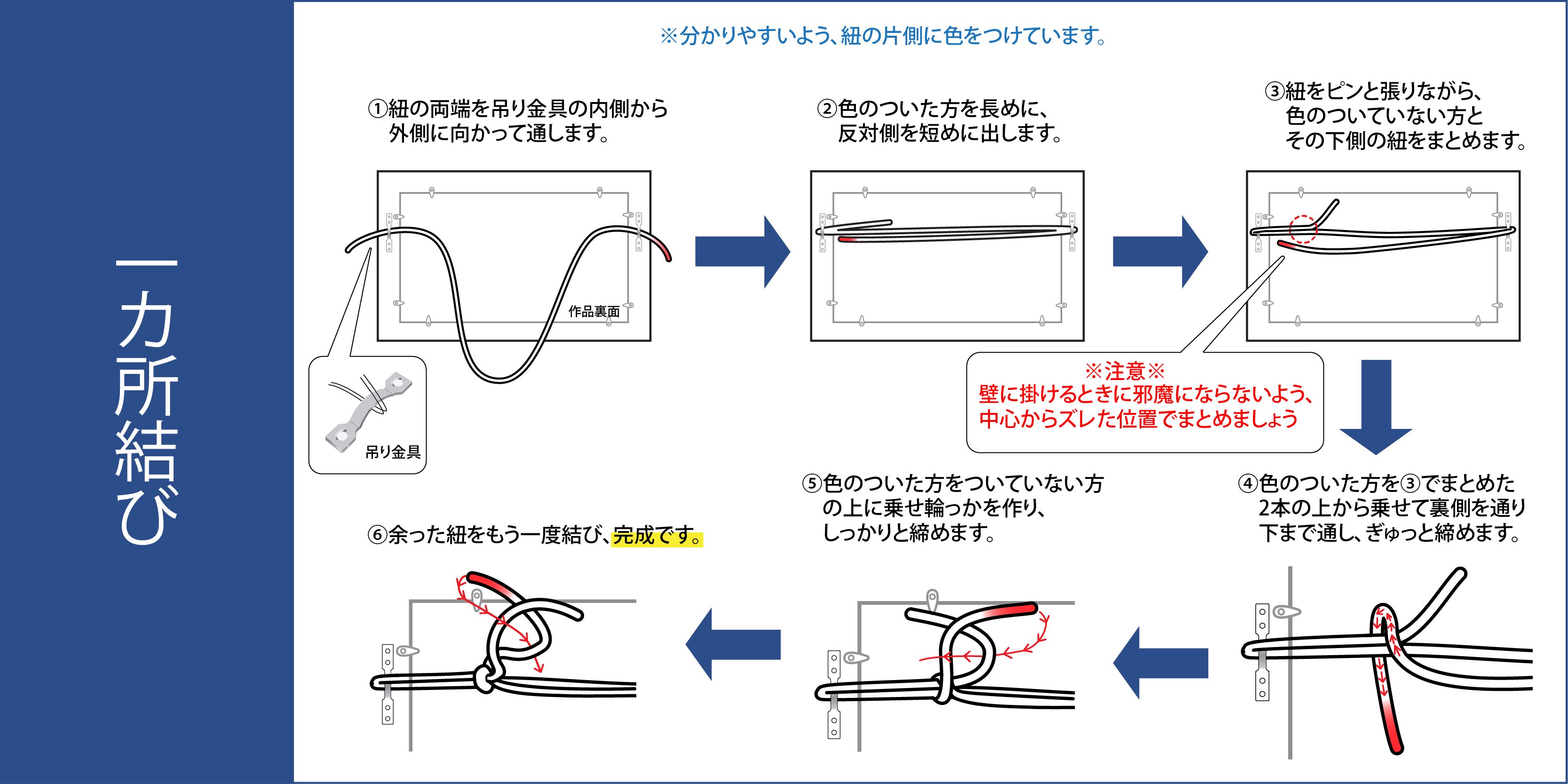
The video explains it clearly, so please refer to the following video to try it.
Unframed and heavy works
It is common for canvas and panel works to be displayed unframed. The large size of the piece may require the high cost of framing, or the artist may prefer to have his or her work displayed unframed. In such cases, heatons or hanging hardware can be attached to the back of the wooden frame, and the string can be attached as when framed.
-Heatons Hanging Cans Amazon
-Heatons Heatons Amazon
-Heaton Heaton Rakuten
Amazon - Heaton Plate Hanging Fittings Amazon
heaton Rakuten - heaton plate hanging bracket Rakuten
3 - 3. hanger plate
Unlike the above fittings for string attachment, hanger plates are attached and hooked with durable steel.
-Monotaro Monotaro
3 - 4. wall hanging metal hook Dokko
Hanger Plate Metal Hook Docko and other methods allow for display without using strings. It is stabilized by attaching metal fittings made to interlock to each wall and the backside of the work with screws. This method is superior in durability and stability.
One point to note is that it is difficult to make slight adjustments later if the work is not accurately leveled during installation. When using these methods, tools such as a level and measuring tape, which we will introduce in the next section, are essential.
-Amazon Wall Mounted Metal Hooks Amazon
-Docco Dokko Rakuten
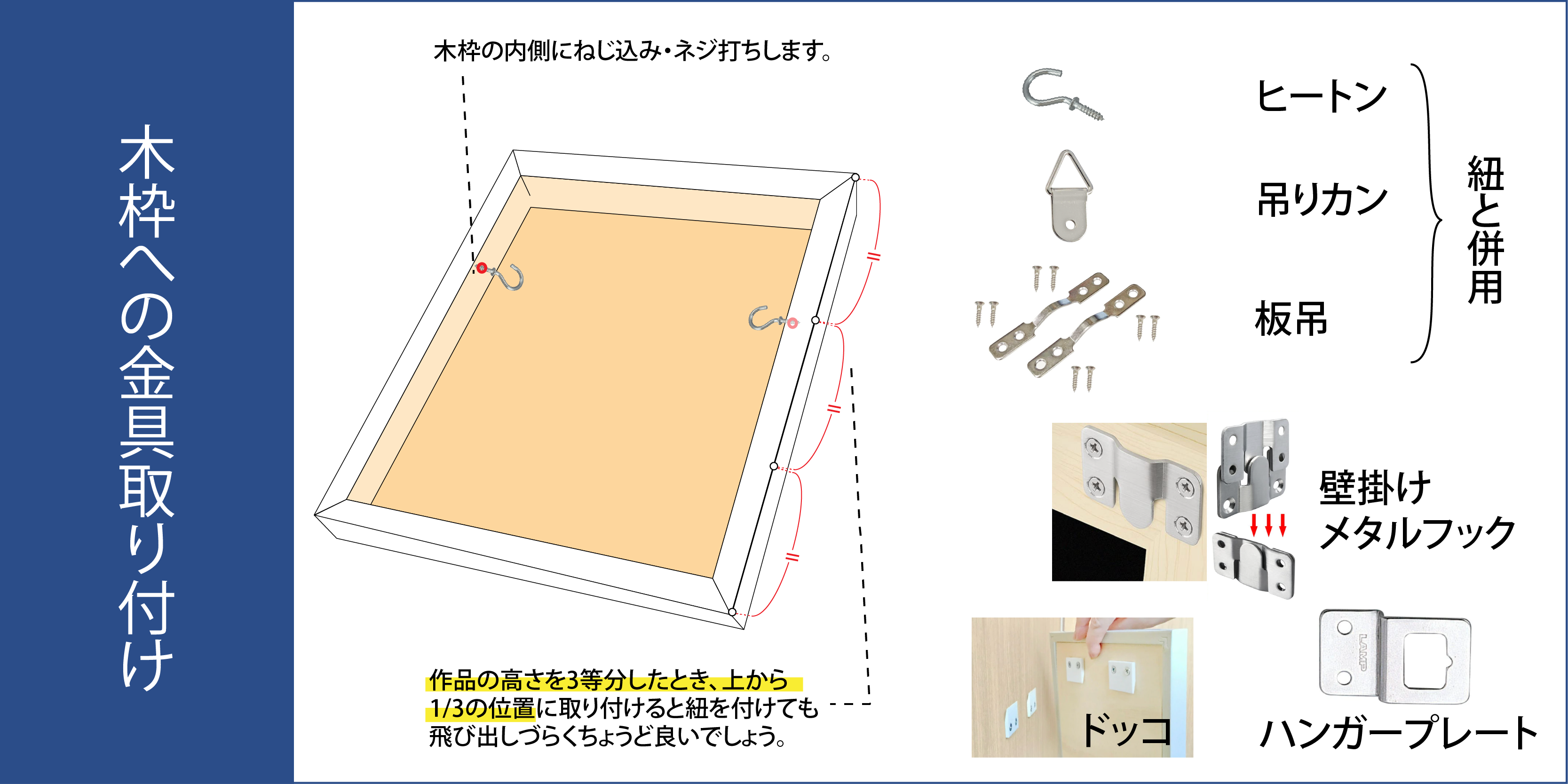
3 - 5. auxiliary products
When using framing straps or hanger plates, the work will be "bowed". This is often not a problem for small works, but for large works, it can be a problem for the appearance of the work. To prevent this, a rubber or other material can be attached to the bottom of the back of the work to keep it oriented parallel to the wall. A product called "universal packing" is also useful for fine-tuning the gap. Please note that this product needs to be glued with tape or other adhesive.
Since the purpose of this product is to provide height, a piece of wood or other object with some rigidity can be substituted for the above products.
-Amazon Backing Rubber Amazon
-Universal Packing All-purpose packing Rakuten
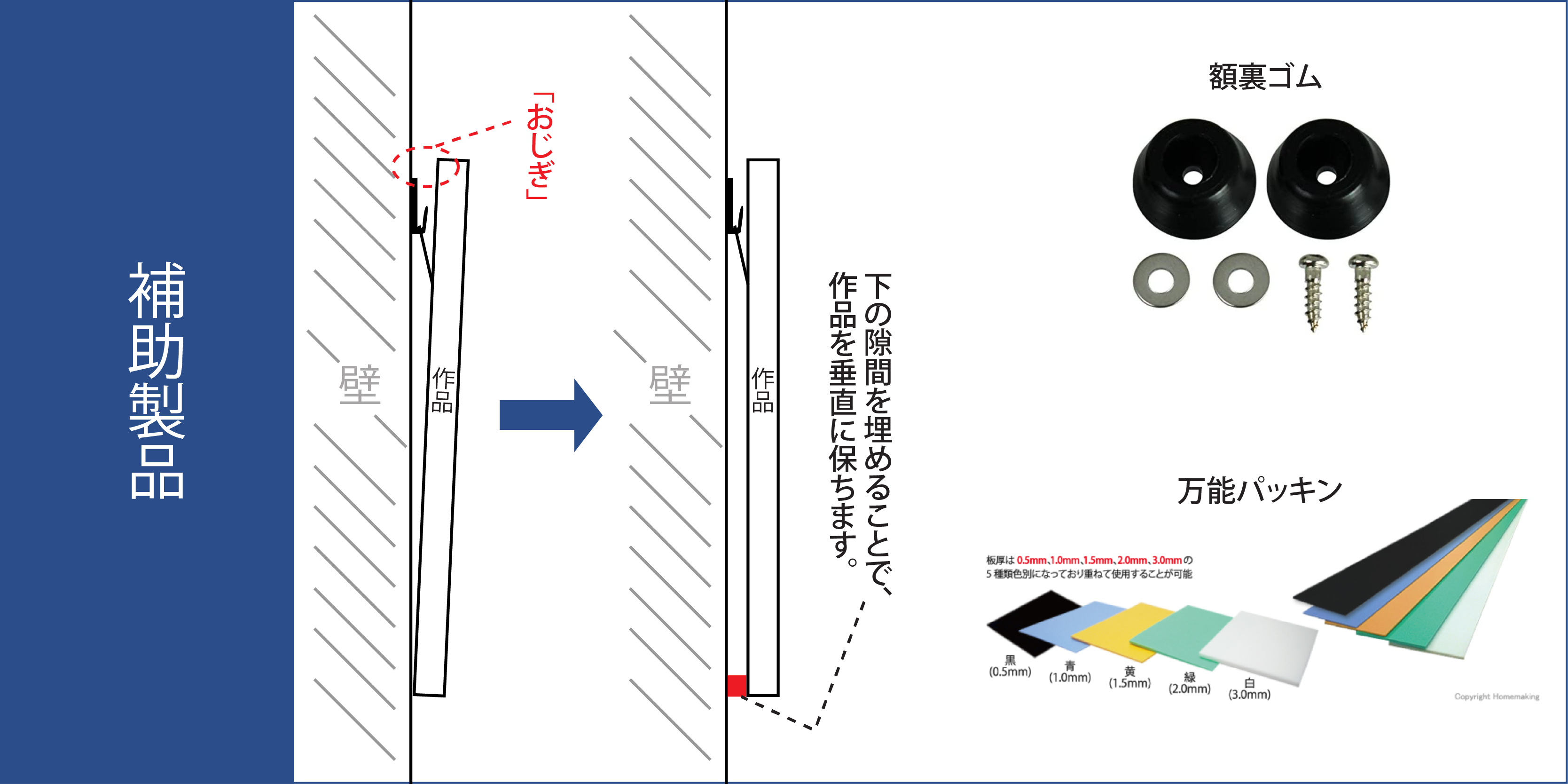
4. decorate
4 - 1. measure the height
Ideally, two people should work together to display the painting. One person should actually hold up the painting with both hands to find the right height, and the other person should mark the position on the wall.
It is said that the height of the work should be about eye level with the center of the work, but if the work is to be displayed at home, a little lower may be best, as the viewer is likely to be looking at the work from a closer distance than in a gallery or museum. The position to be marked depends on how the work is displayed, but the following formula can be used as a guide for a standard three-pin hook.
(your eye level) + (height of the work ÷ 2) - (width of the wooden frame) - 10 = hook mounting position
e.g.) 160cm + (50cm ÷ 2) - (5cm) - 10 = 170cm
If you use a frame string, it is difficult to get the exact height because of the deflection of the string. Adjust this figure according to the height of your work.
Use a measuring tape (Convex) to mark where on the wall the hooks, etc. should be attached.
When measuring the height of the wall from the floor with a tape measure, hold the tip of the tape measure at the border between the wall and the floor with your toes, but leave the tape measure out long enough to make it easier to pull the tape measure rigid.
Masking tape is recommended for marking. Its adhesiveness is moderately weak, making it ideal for positioning. It can be easily removed at the end, and unlike a pencil, it will not leave marks.
-Convex Convex Amazon
4 - 2. horizontal adjustment
When using hanger plates, metal hooks, doccos, etc., a leveler should be used at the point of installation to ensure accurate leveling. When using a frame string, the level can be adjusted by shifting the position of the string, so use the level after the hooks are installed and the work is hung.
There are various types of levelers available, including the most common bubble level, digital types, and those with laser pointers, but we recommend the bubble level because its performance is reliable even if it is inexpensive. It can be placed on top of the artwork or, for doccos, passed between wall-mounted components and leveled by aligning the bubbles in the middle.
-Amazon Amazon
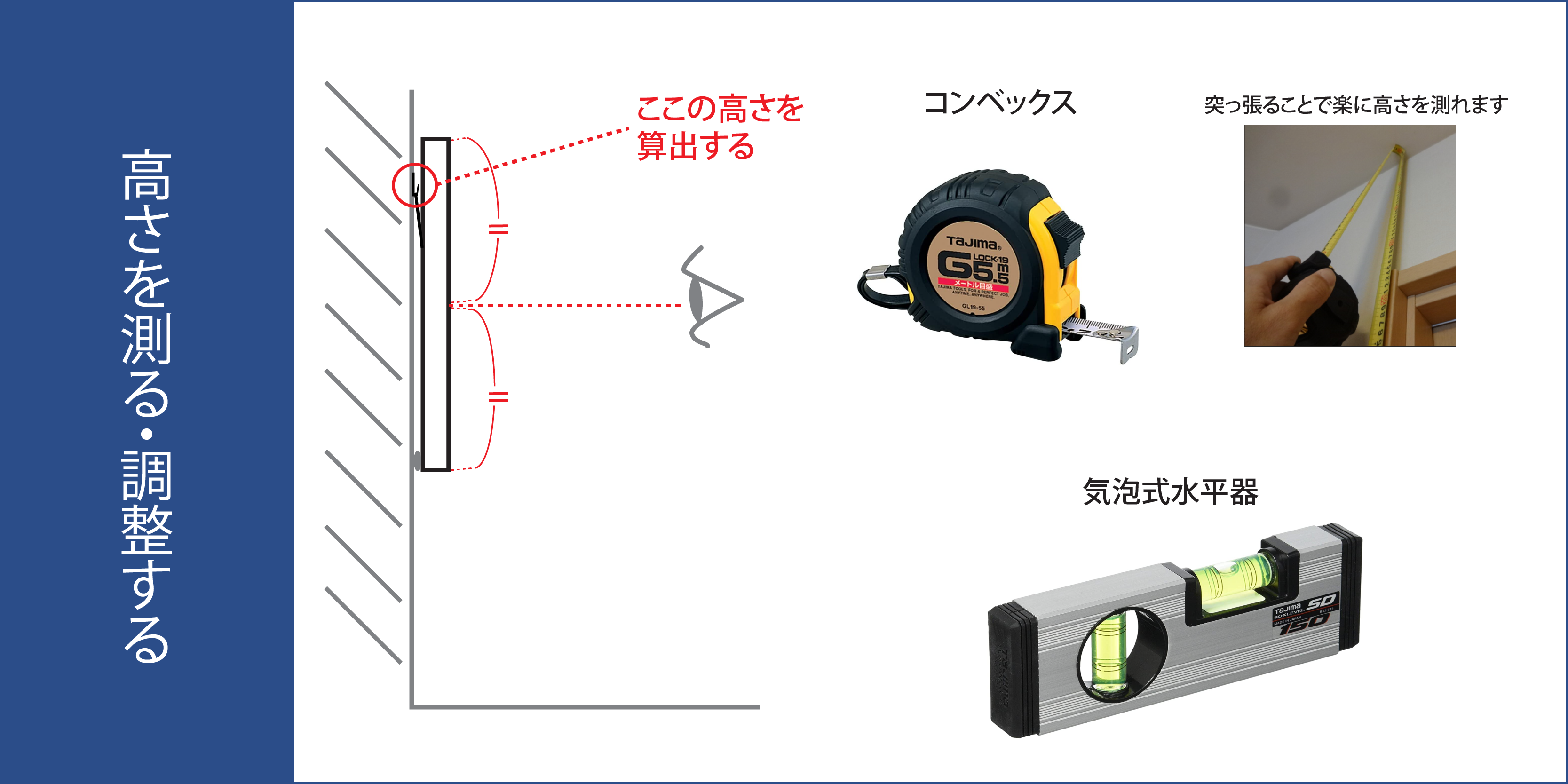
5. checking the flow
Now that we have introduced the various tools and methods, let's check the flow of the workflow for displaying the artwork at a glance.
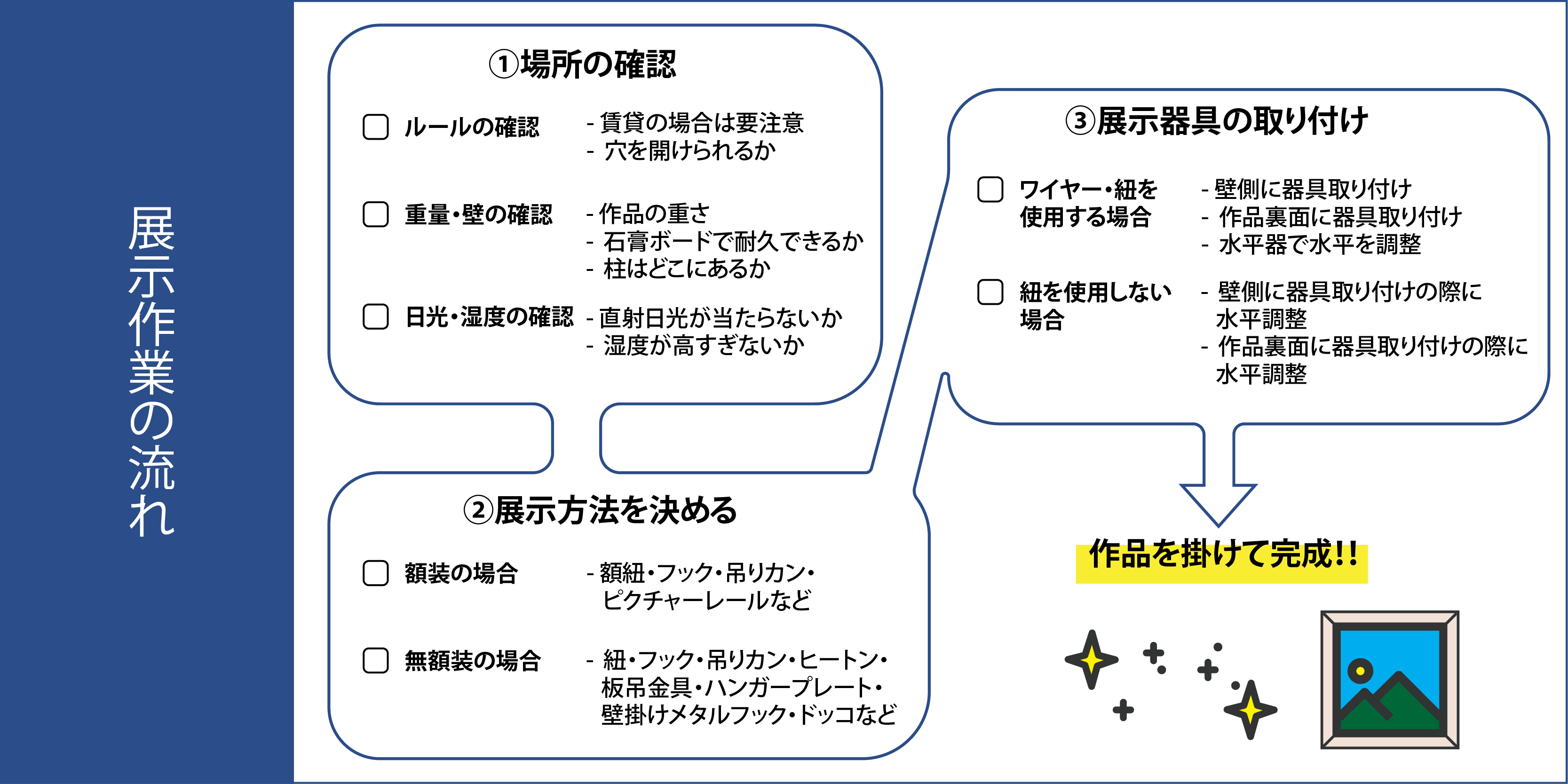
6. appendix - for you who are interested in DIY
You live in a rented apartment, don't want to damage a single wall, and are interested in light DIY. We recommend you to use 2x4 (2x4) lumber to make a pillar and be able to screw into it.
Use jacking products such asLablico orDiaWall. In the manner of a jackhammer, attach the above parts that act as a butt to the end of a piece of wood that is slightly shorter than the ceiling height.
-A screwdriverScrewdriver

💡 For purchasing inquiries, please contact
E-mail: customer_support@tricera.co.jp
CHAT
LINE
Business Hours | Weekdays 10:00~19:00 (Closed Saturdays, Sundays, and holidays)